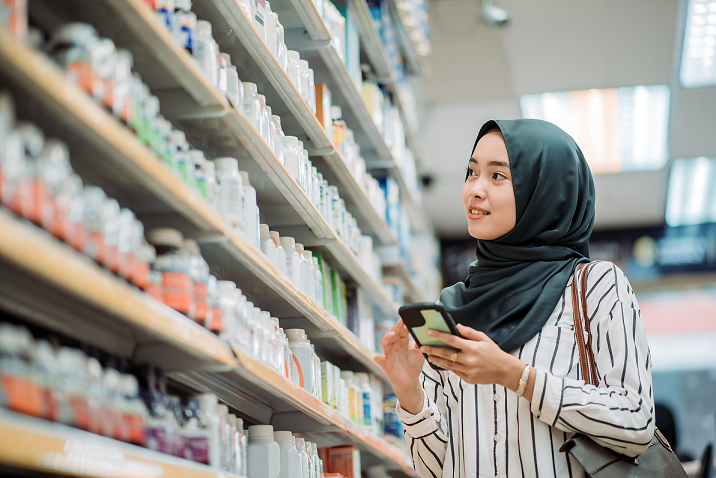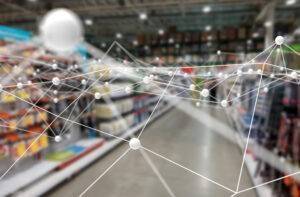Rethinking the role of the physical store
When the world shut down in response to the pandemic, only a handful of businesses remained essential — grocery stores being one of the most critical. Retailers and brands scrambled to adapt to a new reality, where demand for online ordering and delivery skyrocketed and restaurants and wine bars closed indefinitely.
Despite these radical changes, consistent surveying by Shopkick since March of 2020 resulted in the calculation that an average 93% of Americans consistently shopped in-store for essential items. This shows a preference of many consumers for the simplicity and familiarity of traditional grocery.
As restrictions lift and many start to return to a “normal” retail environment, where do the changes from the past year leave retail leaders? While brick-and-mortar is far from dead, it must be reimagined. Retailers need to make adjustments to keep shoppers engaged and satisfied in-store while continuing to meet the needs of shoppers who have grown accustomed to ordering online for delivery or curbside pickup.
 Supporting the shift to omnichannel
Supporting the shift to omnichannel
Restructuring a store’s physical space not only serves as an opportunity to improve sales, but it helps make the in-store shopping experience more convenient and efficient. Creating a space that is dedicated to improving the consumer’s experience incentivizes them to return and continue making purchases.
When thinking about how to enhance a store’s physical space, retailers must consider current consumer trends and their longevity, such as the rapid increase in popularity for BOPIS and click-and-collect services. While these retail strategies became popular over the last year, they often resulted in depleted store shelves and, eventually, customer dissatisfaction. To ensure that customers receive their click-and-collect orders moving forward, some retailers have turned to repurpose physical space. They have created designated areas to process, store and hand out orders in-store.
Retailers have also started to implement solutions to help meet the increase in online demand more efficiently. For example, some retailers have introduced “dark stores,” where physical stores are reserved as mini distribution centers solely dedicated to supporting home delivery and customer pickup. Some retailers have also begun piloting advanced technologies within these stores, like automated curbside pickup features, to make it easier for buyers and delivery drivers to pick up orders without having to leave their vehicles. These are just a few examples of how retailers are using the physical space and often technology to keep customers satisfied.
Bringing back experiences
As the country begins to reopen and store traffic returns to normal levels, brands and retailers are starting to bring back experiential components of the physical store, once again allowing for self-service bars, in-person seating at store restaurants, sampling stations and more. The revival of sampling and food court programs is crucial for encouraging impulse purchases and driving basket sizes, as well as creating a positive store experience for shoppers. However, demos and active sampling will not return without challenges.
Hiring and maintaining a stable workforce has always been an issue for the retail industry, but the impact of the pandemic has further exacerbated this problem. In 2020, the industry experienced a 57.3% average employee turnover rate. In order to support the reintroduction of experiential services like sampling stations, retailers should consider implementing modern, flexible workforce solutions. One way to do that is by bringing in an on-demand retail workforce. With appropriate hiring levels, brands and retailers will be able to adapt to the changes and revival of experiential programs with less risk of overworking their permanent staff, creating more positive workforce morale and keeping customers happy.
Using technology to reimagine the physical store
With the shift in consumer behavior as a result of a year spent inside, many shoppers no longer want to wait in line or stand in a crowded space with strangers. It’s up to retailers to get creative and find new ways to provide better in-store experiences.
Many retailers have adopted new technologies to be more innovative at the store level. They’re implementing more familiar solutions such as cashier-less checkout while also looking at more recent advances such as in-store robots and voice-activated in-store assistants. There is and continues to be a spike in interest and demand for technology customers may not notice in-store, such as dynamic merchandising tools and shelf-monitoring solutions. With these tools, retailers are looking to make necessary modifications to the physical store based on real-time consumer behavior and trends. Brands can also use the data for category planning, allowing them to anticipate product assortments, negotiate category space with retailers and identify opportunities in stores.
Successful retailers understand the importance of data to deliver consumer needs at the right time and right place. With more data in the form of access to current insights on shelf and store conditions, retailers can identify which products perform the best, allowing them to reformat their space and place popular products in the most convenient place for shoppers.
In-store shopping is here to stay
As the world transitions to life post-pandemic, brick-and-mortar is entering a resurgence. While online shopping spiked during the peak of the pandemic, a recent Shopkick survey found that most Americans are now more comfortable shopping in-store. The physical store should be reimagined in order to match the convenience of online shopping options consumers have grown to expect during the past year. To create an enticing and positive in-store shopping experience, grocery retailers need to embrace technology and reimagine their space. By doing so, retailers will undoubtedly be able to keep up with digital competitors and keep brick-and-mortar alive and well.
This article first appeared on Forbes.



